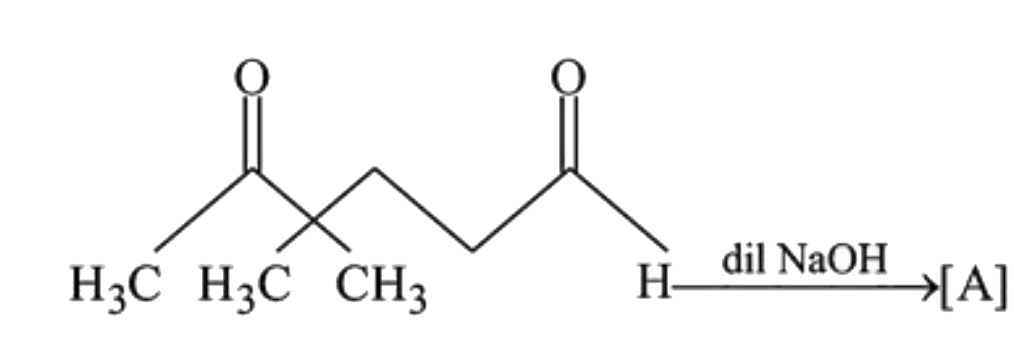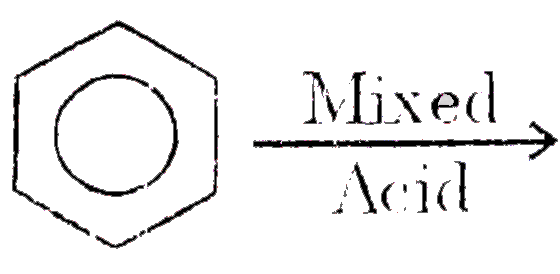2HC≡ChCu2++O2−−−−−−→(A)1mol−−→HCl(B)
Compound (A) and (B) are:




The correct Answer is:B
To solve the question, we need to identify the compounds (A) and (B) formed during the reactions described. Let's break it down step by step.
Step 1: Identify the starting material
The starting material is 2 moles of acetylene, which is represented as:
HC≡CH
Step 2: Understand the reaction conditions
The reaction occurs in the presence of Cu2+ and O2. This suggests that a dimerization reaction may occur, where two molecules of acetylene combine.
Step 3: Write the dimerization reaction
When two moles of acetylene react under these conditions, they can form a compound known as 1,3-butadiene:
2HC≡CHCu2+,O2−−−−−→H2C=CH−CH=CH2
This compound (A) is 1,3-butadiene.
Step 4: Identify the next reaction
The compound (A) then reacts with 1 mole of HCl. This reaction involves the addition of HCl across the double bonds of 1,3-butadiene.
Step 5: Write the addition reaction
The addition of HCl to 1,3-butadiene can lead to the formation of a compound known as 1-chlorobutane:
H2C=CH−CH=CH2+HCl→H2C(Cl)−CH=CH2
This compound (B) is 3-chloro-1-butene.
Summary of Compounds
- Compound (A): 1,3-butadiene (H2C=CH−CH=CH2)
- Compound (B): 3-chloro-1-butene (H2C(Cl)−CH=CH2)
Final Answer
- Compound (A) is 1,3-butadiene.
- Compound (B) is 3-chloro-1-butene.
The starting material is 2 moles of acetylene, which is represented as:
HC≡CH
The reaction occurs in the presence of Cu2+ and O2. This suggests that a dimerization reaction may occur, where two molecules of acetylene combine.
When two moles of acetylene react under these conditions, they can form a compound known as 1,3-butadiene:
2HC≡CHCu2+,O2−−−−−→H2C=CH−CH=CH2
The compound (A) then reacts with 1 mole of HCl. This reaction involves the addition of HCl across the double bonds of 1,3-butadiene.
The addition of HCl to 1,3-butadiene can lead to the formation of a compound known as 1-chlorobutane:
H2C=CH−CH=CH2+HCl→H2C(Cl)−CH=CH2
- Compound (A): 1,3-butadiene (H2C=CH−CH=CH2)
- Compound (B): 3-chloro-1-butene (H2C(Cl)−CH=CH2)
- Compound (A) is 1,3-butadiene.
- Compound (B) is 3-chloro-1-butene.
Topper's Solved these Questions
- BOOK - CENGAGE CHEMISTRY ENGLISHCHAPTER - ALKYNESEXERCISE - Exercises (Archives - Single Correct Answer Type)6videos
ALKYNES
- BOOK - CENGAGE CHEMISTRY ENGLISHCHAPTER - ALKYNESEXERCISE - Exercises (Archives - Fill in the Blanks Type)3videos
ALKYNES
- BOOK - CENGAGE CHEMISTRY ENGLISHCHAPTER - ALKYNESEXERCISE - Exercises (Multiple Correct Answers Type)25videos
ALKYNES
- BOOK - CENGAGE CHEMISTRY ENGLISHCHAPTER - ALKENES AND ALKADIENESEXERCISE - Single correct Answer14videos
ALKENES AND ALKADIENES
- BOOK - CENGAGE CHEMISTRY ENGLISHCHAPTER - APPENDIX - INORGANIC VOLUME 1EXERCISE - chapter-7 Single correct answer1videos
APPENDIX - INORGANIC VOLUME 1
Similar Questions
Knowledge Check
- Question 1 - Select One
CaC2D2O−−→ARed hot−−−−→Cu tubeB,B is
ATolueneBEthyl-benzeneCBenzeneDButyne
In the following sequence of reactions, the products (A) to (G) are formed:
i. 2CH4(g)Δ−−−→1773K(A)(g)+B(g)
ii. 4molof(A)Δ−−−−−−−−−−→Ni(CN)4+THF(C)O3/oxid.−−−−−→(D)only
iii. (A)(1)1molofNaNH2−−−−−−−−−−−→(2)C2H5I(E)3molofE−−−−−−→RedhottubeF⏐↓O3/Red.(G)only
Compounds (A) and (B), respectively, are:View Solution Hdil NaOH−−−−→[A]H2O+−−−→Δ[B]View Solution
Hdil NaOH−−−−→[A]H2O+−−−→Δ[B]View Solution (i)CH3CHO−−−−−−−→(ii)H3O+ (A) HBr−−→ (B)
(i)CH3CHO−−−−−−−→(ii)H3O+ (A) HBr−−→ (B)
The compounds (A) and (B)View SolutionH−≡−H(i)O3−−−−−−−−−−−→(ii)(H2O)/(Zn)(A)Zn/CH3COOH−−−−−−−−−→(B)
Compound (B):View SolutionSiCl4H2O−−→(A)Heat−−→(B)Na2CO3−−−−→Heat(C),
The compound (C ) isView SolutionCompound (A)1molof−−−−−−→HIO4

The compound (A) is:View Solution
P(Monosubsitituted benzene)Na(Hg)−−−−−−−−→+conc.H2SO4QNaNO2−−−−−−−−→+HCl.0∘.5∘CRKCN−−−→CuCNSSnCl2−−−→HClT
Correct statement are :View Solution

